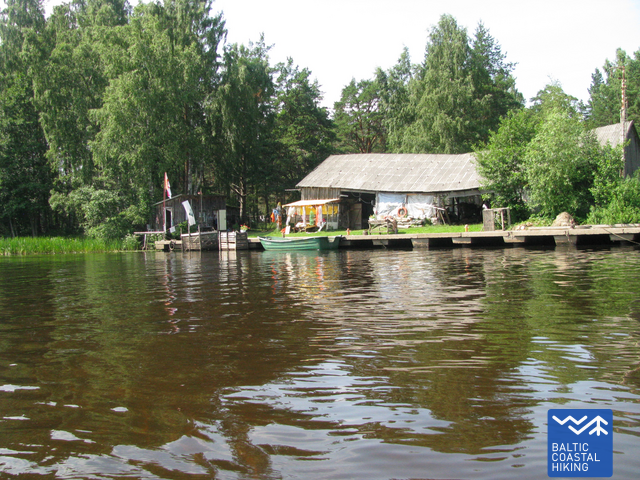 Lielirbe
Lielirbe
The village is situated on both banks (“jūrspuse” or “seaside” and “zemspuse” or “landside” in the dialect of the Western part of Latvia) of the Irbe River (also called Dižirve, Īra) extending for 6 km around where the river flows into the sea. In 1939, there were around 300 inhabitants and more than 70 houses in the village. A little narrow gauge train used to run through the village, connecting it with the center of the district, Ventspils, and Dundaga, Stende and further on to Riga. At the estuary of the Irbe River, there used to be a port of the ancient Livonian seafarers. This seacoast that is now so quiet with only 10 houses used to be an active timber trade and transport center at the end of the 19th century.
This village is at the place where the Irbe (Dižirve, Īra) River flows into the sea, and it is on both shores of the river (sea side and land side). The name of Irbe was recorded for the first time in a 1310 border agreement between the bishop of Kurzeme and the Rīga Dome Capitol. The name of Lielirbe (Irvemūnde) was recorded for the first time in a document from an arbitration court in 1387. At the end of the 19th century, the small port at Lielirbe was an active centre for the sale and transport of timber materials. In the late 19th and early 20th centuries, the largest number of sailing ships among villages on the western shore of Kurzeme was built there. In 1939, the village had some 300 residents, more than 70 houses and a Baptist church which is now at the Ventspils Open Air Museum. A narrow-gauge railroad passed through the village, which had a post and telegraph office, two grocery stores, an elementary school, a choir and a brass band. Lielirbe was one of the largest villages to disappear after World War II. Cultural historian Valda Marija Šuvcāne (1923-2007) was born in Lielirbe, and her daughter, Baiba Šuvcāne, is continuing her mother's work by writing important papers about life along the Livonian coastline. By 2019, a bridge is to be reinstalled across the Irbe River.











